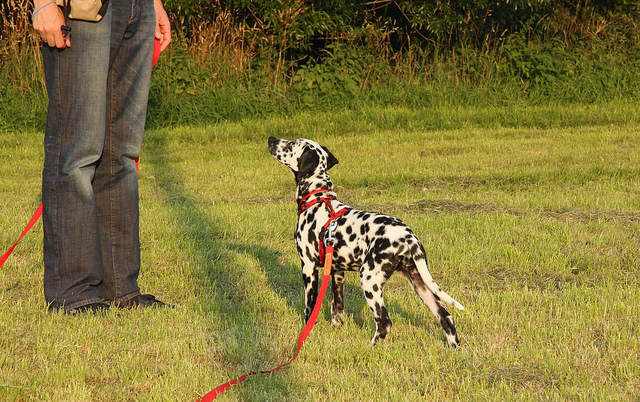
It happens to pretty much anyone who has ever trained a dog: you dog is doing amazing in class and/or at home, but then you take him somewhere else and he won’t listen to anything you say. This is the point where most dog owners get frustrated and claim their dog is stubborn – only working when he feels like it. The truth is, most dogs are not stubborn. There are in fact a few reasons why your dog may not be responding to your cues in a new environment.
Here are 3 of the most common causes for this situation and a few tips to help you get over the obstacle and back to training.
Nervous
If you have a dog that is nervous in new places, it may be that they are just too worried about what is going on around them to respond to your cue. When this happens, your dog isn’t ignoring you, but physically can’t respond.
A Few other signs your dog is nervous, anxious or “worried”:
- Won’t take your treats
- Cowering or hiding
- Pulling on leash to leave
- Whining
- Ears down
- Lip-licking
- Whale eye (whites of eyes showing)
- Tail tucked
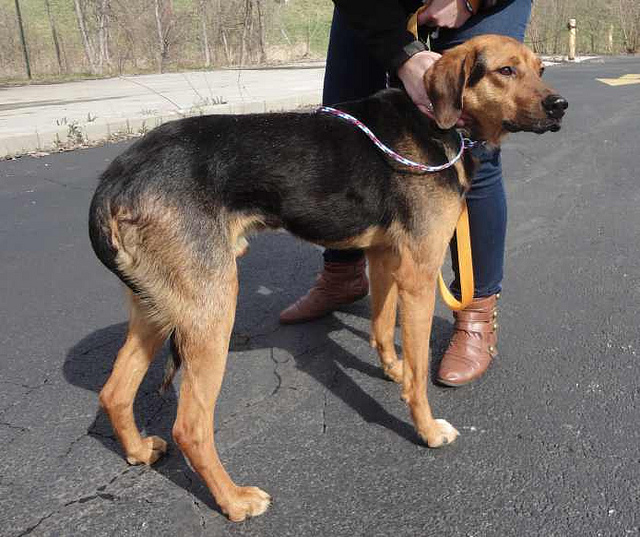
If you see any of these signs along with not responding to you, your dog is in no position to do obedience training.
If you can tell what is bothering your dog, try to add distance and see if your dog is able to work then. You can also try a higher value treat (this can help get your dog focused back on you). However, if your dog is completely shut down he is giving you a clear signal: “I am not ready for this, I can’t handle it.” At which point you need to leave the environment and try something lower-key.
TIP: You can download a free dog body language poster to help you identify your dog’s “mood” here.
Reactive
Reactivity, like nervousness, is caused when a dog is over threshold. In this case, your dog is too-aroused by his environment. (Note: a reactive dog can be reacting out of fear, nervousness or anxiety, as well excitement or aggression).
Your dog may be:
- Lunging at objects in the environment (usually people, dogs, bikes, birds, etc)
- Barking
- Whining
- Growling
- Staring for longer than 2 seconds
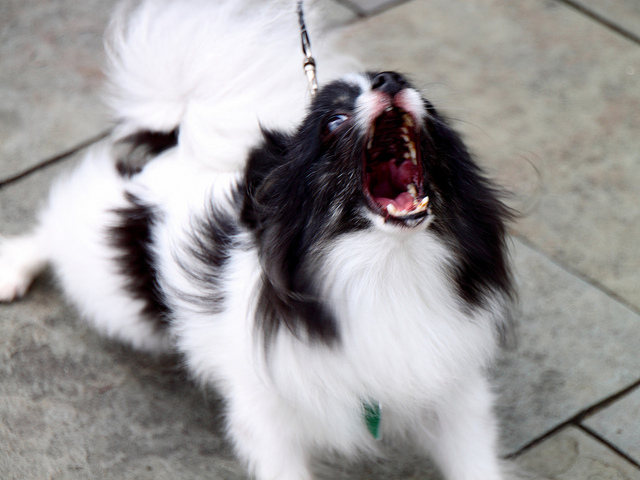
You will treat this the same way as nervousness in a sense. You can try to add distance and see if you can get to a place your dog is under threshold (able to respond to and focus on you). You can also try higher value treats.
Otherwise, you need to leave and try to find another environment that your dog is going to be able to work in and work up to the more exciting/scary/etc. environment.
Distracted
If your dog is well adjusted and just young or not used to working, he might just be simply distracted. The world is full of fun things to look at, people to see and greet and that can make listening hard.
If your dog is:
- Looking around constantly at everything
- Trying to greet everyone that walks by
- Pulling you to trees for sniffing
- Full of energy
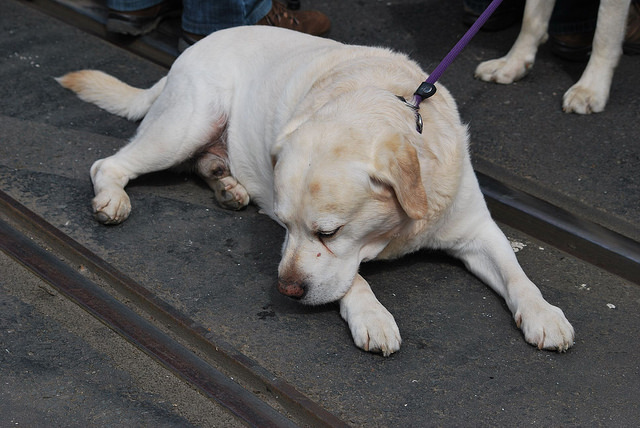
Then he just needs some more practice in calmer environments. You should work on gradually building up the distractions – so first work in your house, than your backyard, than the front yard, then the sidewalk, then the park on a slow day, etc. Assuming your dog will go from behaving like an angel in the house to a park on a busy Saturday is wishful thinking.
TIP: Exercising your dog before training to get rid of that excess energy can sometimes help a distracted pup.
Generalization
In addition to the three main issues mentioned above, there is the simple fact that dogs don’t generalize.
What does this mean?
Well, when a child goes to school and learns that 2+2=4, he comes home and still knows that 2+2=4.
However, dogs are spatial learners, meaning everything you are teaching them is connected to where you are, where he is, the position of your hands, etc. He pays attention to every little detail, and, in a sense, those become parts of the cue.
So, your dog learns sit in your living room. You move to the yard and ask him to sit and he stares at you like you just spoke Klingon.
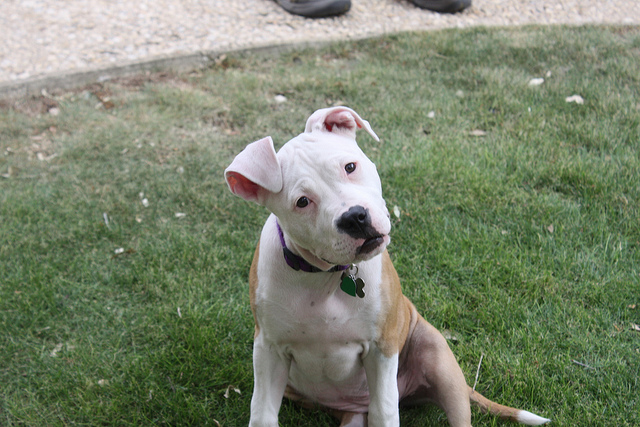
Luckily, this is easy to overcome, but it does take a few extra steps in the learning process. The first step is being aware that your dog doesn’t generalize. Now that you know, you won’t think your dog is being stubborn or get frustrated when he doesn’t respond to his new cues elsewhere.
Next, you need to “re-teach” him the cue. This means you need to back up a few steps in your training until he is performing the new behavior in the new environment. Most of the time, it won’t take as long this time, since your dog does know the behavior.
Once you have done it in a few different environments, your dog will learn that the space around him does not affect the cue and he will be able to perform the behavior, generally, wherever you ask of him.
It’s important to note that lack of generalization may be happing concurrently with the three issues above – nervousness, reactivity, distracted – which means you have to work on both before your dog wil be able to listen to you wherever you wish.
Reactivity and Nervousness
You should also know that these are things that need to be worked on as well. Classical and counter-conditioning can help. The best thing is to find a certified dog trainer in your area to help you overcome these obstacles, which will help your dog live a happier, less stressful, life.
About the Author
Based in Wilsonville, Ore., animal lover Kristina N. Lotz is a Certified Professional Dog Trainer – Knowledge Assessed (CPDT-KA) and a member of the Dog Writers Association of America. She is the founder of A Fairytail House. In her spare time, she trains and competes in a variety of performance events with her Shetland Sheepdogs and caters to her two rescue kitties. She smartly married a Veterinary Technician, who helps keep the fur kids happy and healthy, and provides a quick resource for articles.
